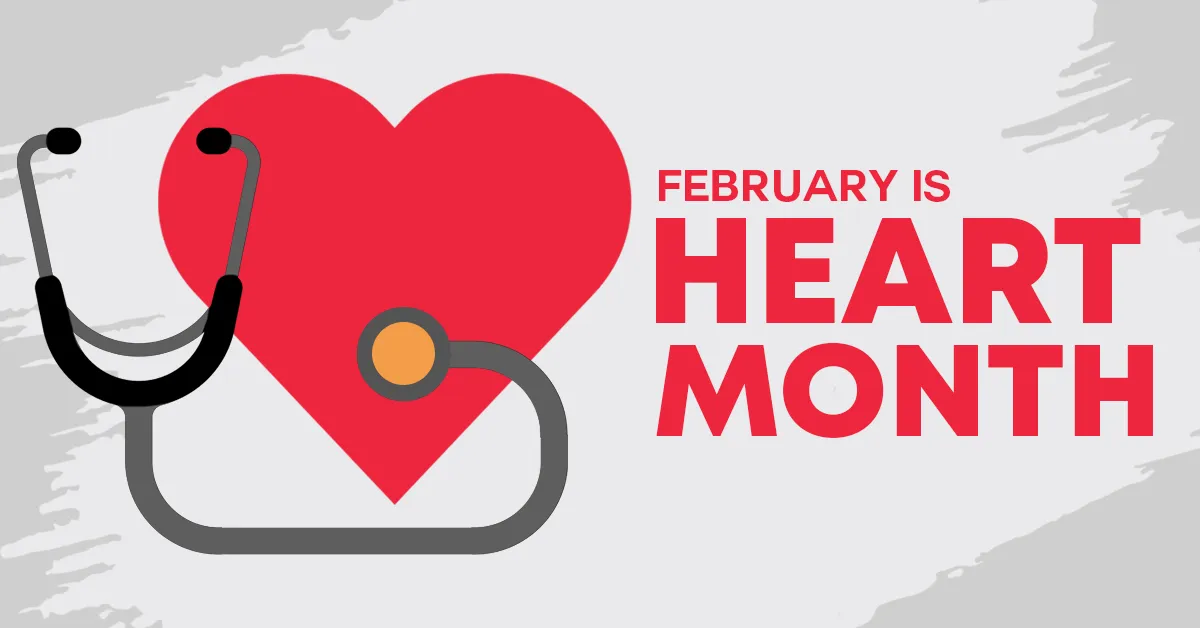Every February health organizations recognize American Heart Month as a way to raise awareness of heart diseases.
The first Friday in February is National Wear Red Day, a day to highlight the year-round importance of heart health. Among all of the health months we spotlight, American Heart Month is one of the best publicized.
This is crucial because of how widespread the impact of heart disease can be. The Texas Heart Institute reports that Americans’ chances of dying from heart disease are as high as 1 in 3.
Who is at the Greatest Risk?
Contrary to popular belief, heart disease can happen at any age. In fact, half of all Americans have at least one of the top three risk factors for heart disease: high blood pressure, high cholesterol, or are previous/current smoker.
Physical activity plays a role in weight and blood pressure levels, so a sedentary lifestyle also is also a major risk factor.
The high rates of obesity and high blood pressure occurring in those ages 35 to 64, are putting patients at risk even before their 40th birthday.
Over 70 million adults in the U.S. are considered obese (split 50/50 by gender) and nearly 100 million more are classified as “overweight.”
Other conditions and behaviors that can put you at risk
Obesity – Individuals who are obese experience increased stress on their hearts.
Diabetes – The build-up of sugar in the blood can cause damage to blood vessels and nerves that control the heart.
Physical Inactivity – Ensure you are getting at least 150 minutes of weekly moderate-intensity activity to help keep your heart and blood vessels healthy. This could be as simple as taking a brisk walk each day.
Unhealthy Eating Patterns – Eating too much sodium (salt) increases blood pressure
G.O. R.E.D.
Heart disease was long considered a concern primarily for men. Within the last 20 years research has revealed that, unfortunately, the risk is relatively similar for women as it is for men.
You may have heard the acronym “Go Red for Women” in connection to American Heart Month. Heart.org uses this to raise awareness of women’s risk of heart disease.
Get Your Numbers – Ask your doctor to check your blood pressure and cholesterol.
Own Your Lifestyle – Living healthy is up to you, nobody can do it for you.
Realize Your Risk – According to heart.org heart disease kills one in three women.
Educate Your Family – Make healthy food choices for you and your family.
Don’t be Silent – Let others know the risk of heart disease.
Am I getting enough physical activity?
Unless you spend designated amounts of time at the gym each week you may not know how much physical activity you are getting each week (should be at least 150 minutes). Some of the tasks you do at work, chores around the house, and other routine tasks may contribute to your physical activity without even realizing it.
Your smartphone or smartwatch is able to track this for you. Many phones come pre-installed with health apps that track your activity (even if you may not have ever used them before). If you do not have a health app there is a wide variety to pick from on your phone’s app store. Many of these apps even use the American Heart Association’s “heart points” metric to track activity.
Even if you do not plan to use one of these apps regularly, using it over the course of a “regular” week can help you gauge how much activity you are getting.
So what can you do?
Don’t smoke – Quitting smoking can make a big difference in lowering your risk. The CDC and other organizations provide resources to help you stop smoking.
Manage your conditions – Work with your healthcare provider to manage any current health conditions you have.
Eat a low trans-fat, saturated fat, sugar, and sodium diet – By eating a diet high in vegetables and fruits, you can reduce your sodium intake.
Stay active – Remember that 150 minutes of activity per week we mentioned? Push for achieving this and break the goal into small blocks if necessary to fit your schedule. Only 25 minutes of activity each day would help you reach that weekly milestone!


